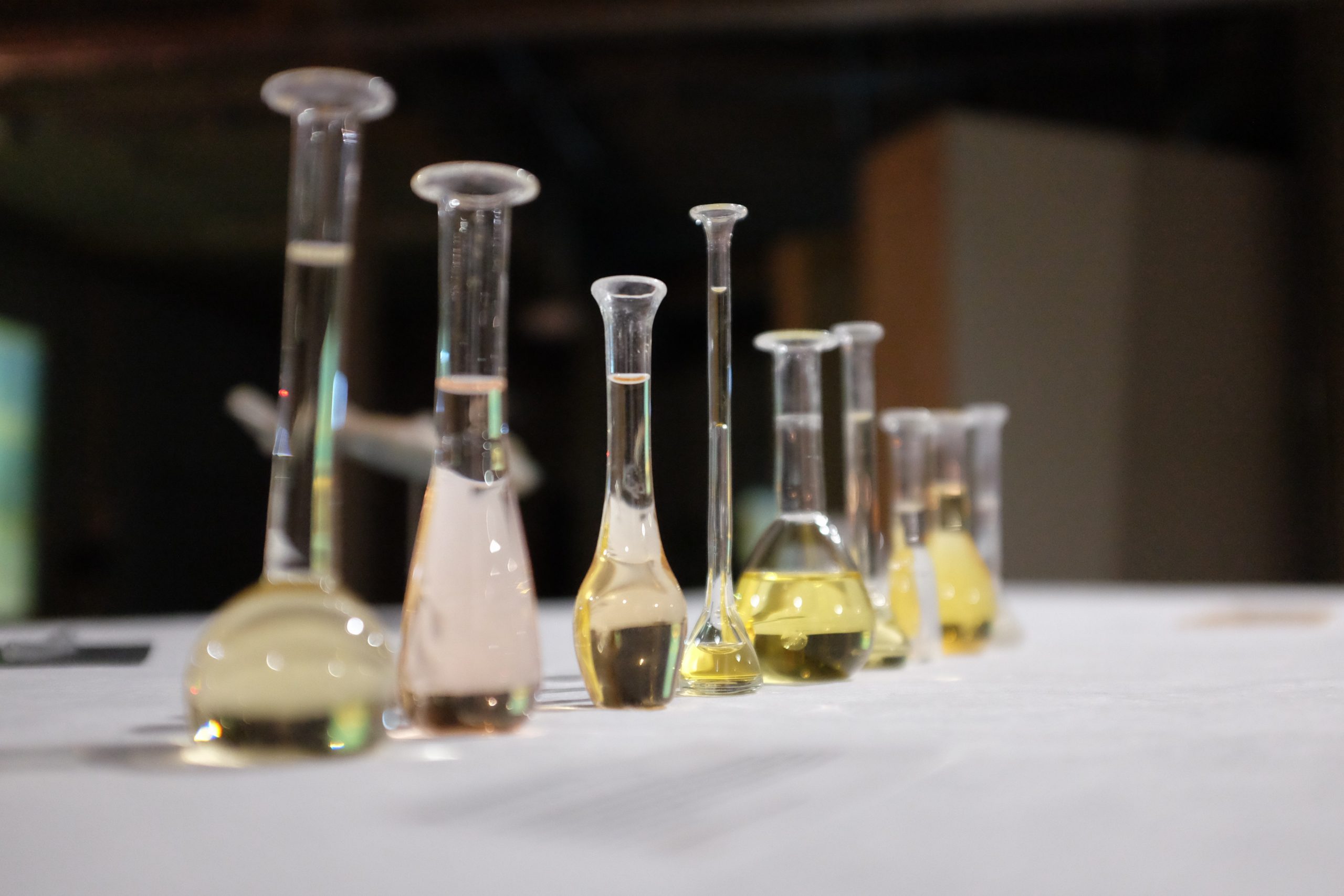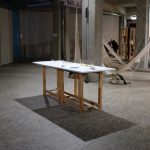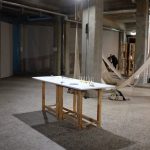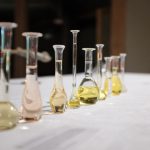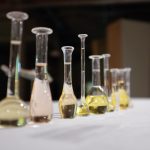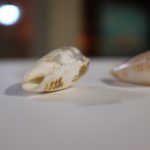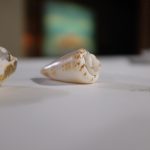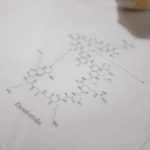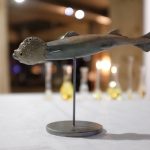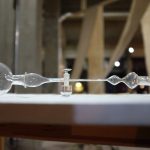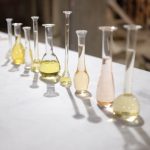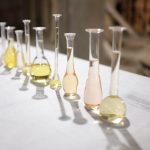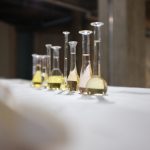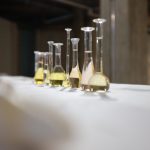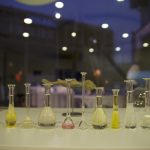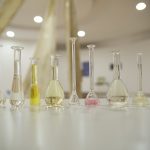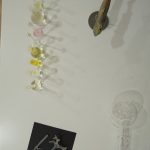The Mediterranean is a chimeric body of water made out of communicating vessels whose chemical and biological composition is affected by the hydro-political forces of the lands that surround it. The current flux
of underwater species foreshadows the imminent exodus of the people on the land above. Correspondent Species, a body of work that examines endemic and invasive water species and the fluxes that drive them.
The term “Correspondent species” was communicated to the artist by marine biologist Dr Elvira Brunelli
to describe two fish species competing for the same habitat and resources in Calabria. When she subsequently tried to research the term, she could not find it, wondering if perhaps she had misheard or it got lost in translation from Italian. Either way, as is often the case, the invasive counterpart of an endemic species is introduced into the Mediterranean through migration corridors and driven by climate change.
The biochemical hybridization of the water and its inhabitants has many causes, and bears many seen and unforeseen consequences. Events such as mass mortality, toxic blooms, feminization of marine life due to endocrine disruptors, marine genetic resources in areas beyond national jurisdiction monopolized by only three countries (the US, Germany, and Japan) yet to be equally divided between the global north and the global south, chemical spills, new forms of symbiosis among species to counteract the Anthropocene constitute the raw material from which Lara Tabet draws to reflect on the ever-changing biochemical fabric of our waters.
Sponshark
Ceramic Sculpture
Ceramist: Eli Hajj
A hybrid creature modeled on the lantern shark Etmopterus pusillus and the marine sponge Ircinia fasciculata. Etmopterus pusillus is an arctic species that was recorded for the first time in the Mediterranean
in Lebanese waters during the Oceania Deep Sea Expedition in 2016. How and why it migrated remains unknown. Ircinia fasciculata is a marine sponge that suffered a mass mortality in 2008 and 2009 due to the warming of the Mediterranean Sea. Sponges are the earliest evolving animals. Their unique properties and architectures make them invaluable for the production of compounds with biomedical, biopharmaceutical, nutraceutical, and ecological importance such as anti- tumor, antiviral drugs but also biomolecules for tissue engineering that stimulate the regeneration process of human tissue.
Nine Lachrymatory Bottles
Hand Blown Lachrymatory Bottles
Glass Blown by Khalifé Frères (Sarafand, Lebanon)
Glass bottles showing colorimetric measurements of ammonia, nitrates, and nitrites from three different locations along the Mediterranean: The Rawché Area in Beirut, The Mareograf (zero point altitude) in Marseille and the Gulf of Saint Euphemia in Calabria. The glass containers are modeled on roman lachrymatory bottles or tear catchers that were used to collect the significant tears in a person’s life or to carry the tears shed by loved ones in mourning.
Corridor of Migration
Hand Blown Glass Sculpture In Three Parts
Glass blown by Khalifé Frères
Glass Sculpture based on Charles Boudouresque’s schematization of species introduction.
Correspondent Species
Morphing Animation On Tablet
Thalassoma pavo is an invasive “thermophile” species that was introduced in the Mediterranean sea in the 1980s. Coris julis, its endemic counterpart, is a cool water species, a potential “loser” species in a warming water scenario.
Imprints
Crystallized Lumen Prints On Photosensitive Paper
Alien and endemic species of seaweeds from three different locations (Calabria, Marseille, and Beirut) along the artist migratory route since her recent exile from Beirut to Marseille are imprinted on Black and White photosensitive paper using the lumen printing technique, fixed and crystallized with seawater from that same location.
The Fair and The Equitable
VR 60s + CODED SOUNDTRACK
VR developer: Vincenzo Cosentino
3D artist: Raffaele Peluso
Sound Coding: Lara Tabet
Etmopterus pusillus shark is swimming in a sea of “algae” modeled after cross sectional microscopic images of the fish gills of Thalassoma pavo showing Cadmium toxicity, stained with Green Fluorescent Protein extracted from the jellyfish Aequorea victoria and Red Fluorescent Protein extracted from the sea anemone, Entacmaea quadricolor.
Marine genetic resources (MGRs) is a term used to designate the genetic resources of the deep sea that can be utilized for a wide range of applications such
as pharmaceutical, cosmetics, food, and biomedical research. Fluorescent staining proteins used in molecular research is one such example. Currently, just three countries account for almost all patents based on MGRs: Germany, the United States and Japan, thus raising equity issues.
The soundtrack of the VR encodes a sentence from the UN draft of the treaty regulating biodiversity in areas beyond national jurisdiction: “to promote the fair and equitable sharing of benefits arising from the utilization of marine genetic resources in areas beyond national jurisdiction.”
Spicules
Transparent Resin 3D Prints
3D artist: Raffaele Peluso
3D printed spicules of three endemic marine sponges from Beirut (Microscleroderma lamina), Calabria (Topsentia calabrisellae) and Marseille (Petrobiona massiliana) modeled on their respective electron micrographs. Marine sponges are the most primitive of marine animals. Their cells are arranged around a skeleton of spicules that maintain its shape and allow species identification. Their use in medicine dates back to antiquity, when Hippocrates discovered their antimicrobial effect and recommended using them as a salve on the soldiers’ wounds. As they filter 10.000 liter of water per day for food, sea sponges also trap DNA shed by other animals and act as testifiers to the biodiversity and biochemical changes in the ocean.
The magician’s belly
Conus Magnus /Conus Ventricosus
Sea snails from the genus Conus are predatory and venomous. Their venom contains conotoxins which have powerful neurotoxic effects and are widely studied in neurophysiology.
Conus magus is found in the Red sea and the Indo- Pacific ocean. Ziconotide, a chemical derived from its toxin, is a non-opioid painkiller that is 1.000 times more potent than morphine.
Conus ventricosus is found in the shallow waters of the Mediterranean sea. Contryphan-Vn, its venom, provides a powerful tool for neuromuscular research.
